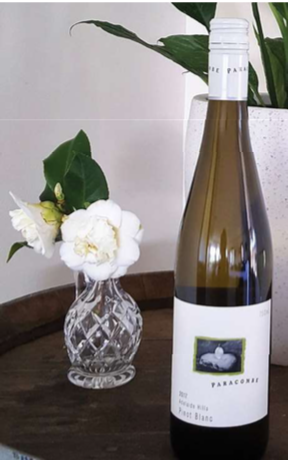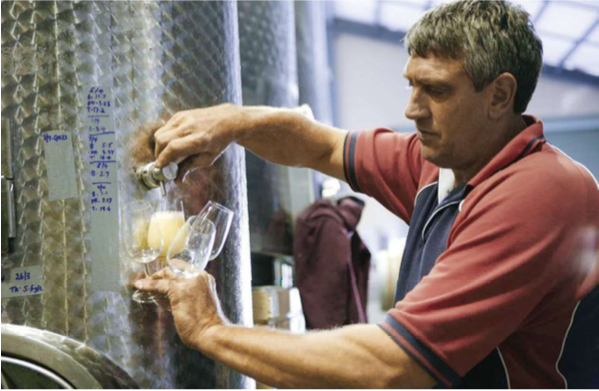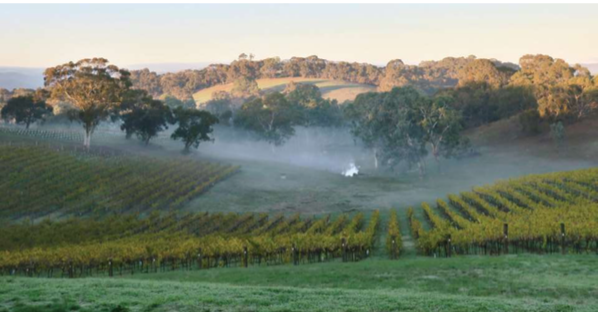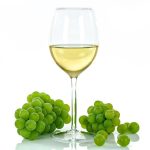By Paul Drogemuller, Owner/Founder/Chief Winemaker, Paracombe Wines, Adelaide Hills, South Australia
First published in the Spring 2018 issue of the Wine & Viticulture Journal

A love of alternative aromatic white wines brought me to Pinot Blanc. My involvement with this variety came about five years ago after a lucky opportunity to acquire some callused sticks, which we planted on our family vineyard at Paracombe in South Australia’s Adelaide Hills.
It was a leap of faith and the right decision. Pinot Blanc has been a dream to grow in our cooler, good rainfall climate of the Adelaide Hills. From planting the sticks to now, it’s been exciting and trouble free, supported by the variety’s generous but controlled vigour quality. Compared with other varieties, I have found it has a very good open and upright canopy with a well- balanced bunch weight.


Our Pinot Blanc is planted on the cooler, steeper, southern aspect of our vineyard with rows planted in a north- south orientation at a density of 900 vines per acre. These slopes are well drained and comprise ancient ironstone, quartz and clay soils. This is important because terroir influences wine style with the cool climate combining with our ironstone and quartz soils. Paracombe’s Pinot Blanc has fresh acidity, along with a fi ne palate and beautiful citrus blossom aromas.
Looking to the future, I believe there is strong potential for growth for Pinot Blanc in our climate. It is often grown in cooler regions in Europe and throughout the world. For us here at Paracombe we started from a small base, and now we’re on an expansion plan to increase our plantings on different aspects of the site too. We are very much looking forward to the intricacies that these specialist sites will grant us.
There is strong interest in Pinot Blanc as an emerging variety. I am pleased to say our straight varietal Paracombe Pinot Blanc has been well received, along with our aromatic five-varietal white blend, Grüner V5, of which Pinot Blanc is an important component. These wine styles are made to complement modern, Asian fusion dining and I see a big future ahead for this great variety.
At Paracombe, we are committed to three Pinot varieties: Pinot Noir, Pinot Gris and, more recently, Pinot Blanc. As I mentioned, we have planted Pinot Blanc on different sites and soil aspects to discover more about its character and versatility in the vineyard and winery.
I’m a strong advocate for Pinot Blanc, appreciating its worth as a great wine for smaller producers like us. It’s delicious and versatile. It will happily feature on restaurant lists and is also suitable for retail or cellar door sales for those people wanting to take a bottle home to share its great personality with family and friends.
PINOT BLANC

By Peter Dry, Emeritus Fellow, The Australian Wine Research Institute
Background
Until the end of the 19th century, Pinot Blanc (PEE-no BLONK) was often confused with Chardonnay — therefore any mention of Pinot Blanc prior to that time is unreliable. Like Pinot Gris, it is a colour mutant of Pinot Noir. Synonyms include Clevner, Klaevner (Alsace), Weisser Burgunder (Germany) and Pinot Bianco (Italy). The global area planted (2010) was 14,742ha (Germany has 26%, Italy 21%, Austria 13%). There are also significant areas in the Czech Republic, Hungary, Slovakia, Slovenia, Ukraine and Moldova. The area in France increased to 1565ha at the end of the 1980s but has since declined slowly to approximately 1300ha in 2010. In France, there is little grown outside Alsace, where it is regarded as a workhorse variety, and less regarded than Pinot Gris. In Italy it is used for dry white wine, mainly in the north east. In Germany the largest areas are in Baden, Pfalz and Rheinhessen. In Austria it is often blended with Welschriesling and used for both dry and sweet wines. In California, Pinot Blanc is not as popular as Pinot Gris, but it is widely planted, used for both still and sparkling wines. It is also grown in Oregon and British Columbia. The first commercial planting of Pinot Blanc in Australia may have been in the Yarra Valley in 1997. There are now at least 17 wine producers in Australia (Victoria, South Australia, New South Wales, Tasmania and Western Australia).
Viticulture
Budburst and maturity are early. Vigour is moderate to high with semi-erect growth habit. Bunches are small to medium and compact with small berries. Yield is moderate (higher than Pinot Gris). Spur pruning is used in Australia. In both France and Australia, susceptibility to botrytis bunch rot is higher than average. There is clonal variation for both bunch size and compactness and susceptibility to bunch rot.
Wine
Wines of Pinot Blanc have moderate structure, similar to Pinot Gris but with more freshness and delicacy. They may also have higher acidity than Pinot Gris. Descriptors include apple, pear and white flowers. In Alsace, wines labelled as ‘Pinot Blanc’ are often blends with Riesling, Sylvaner or Auxerrois. Pinot Blanc may also be used in sparkling wines such as Cremant d’Alsace.
For further information on this and other emerging varieties contact Marcel Essling ([email protected] or 08 8313 6600) at The Australian Wine Research Insti tute to arrange the presentation of the Alternative Varieties Research to Practice program in your region.















